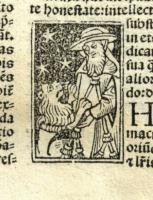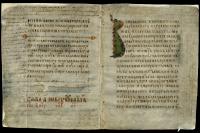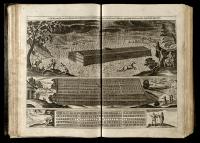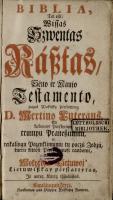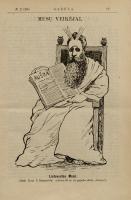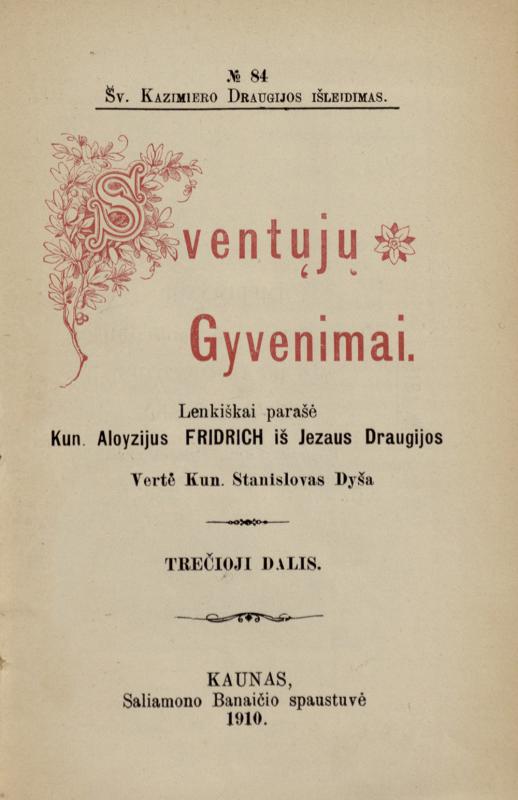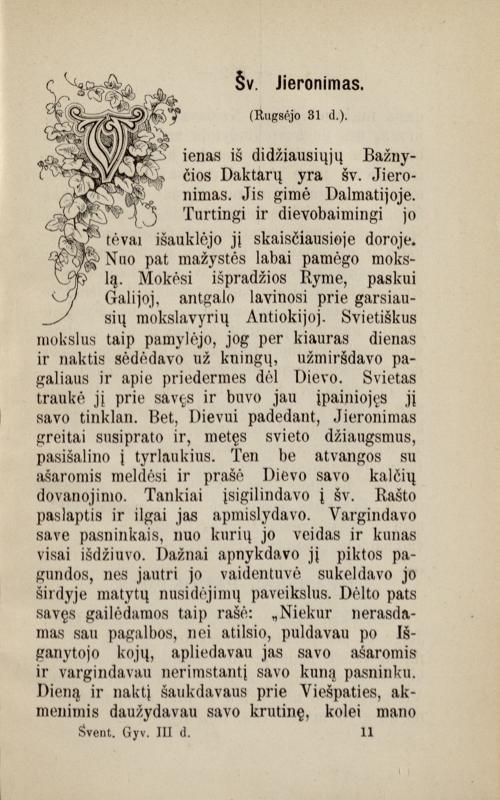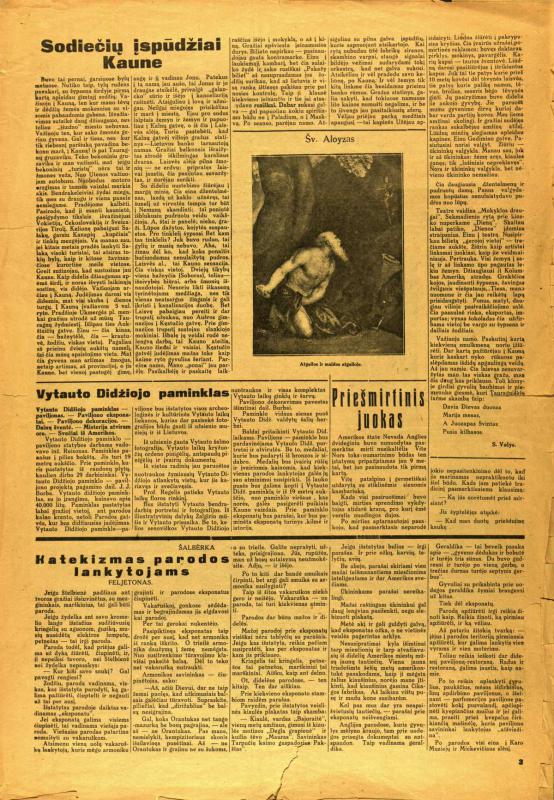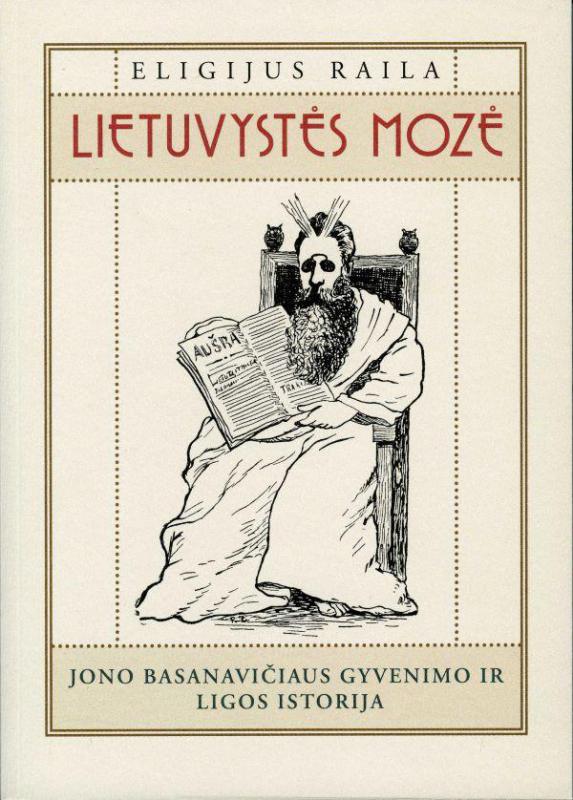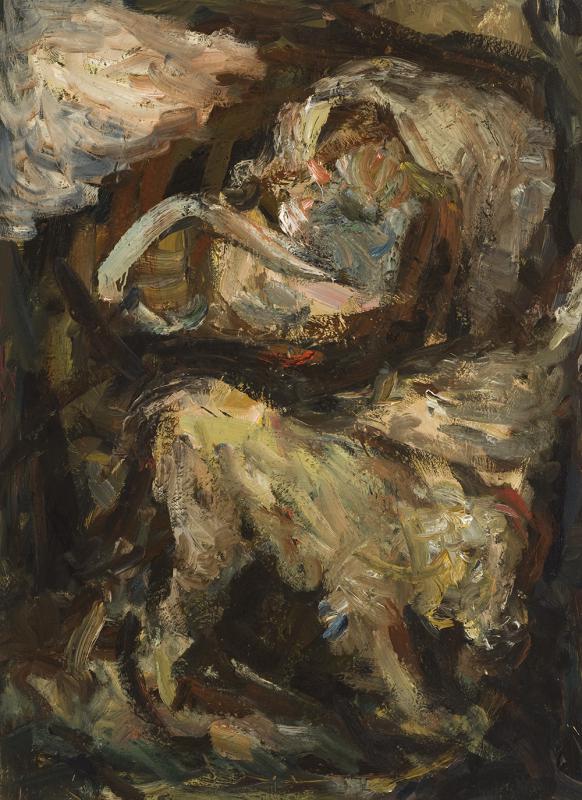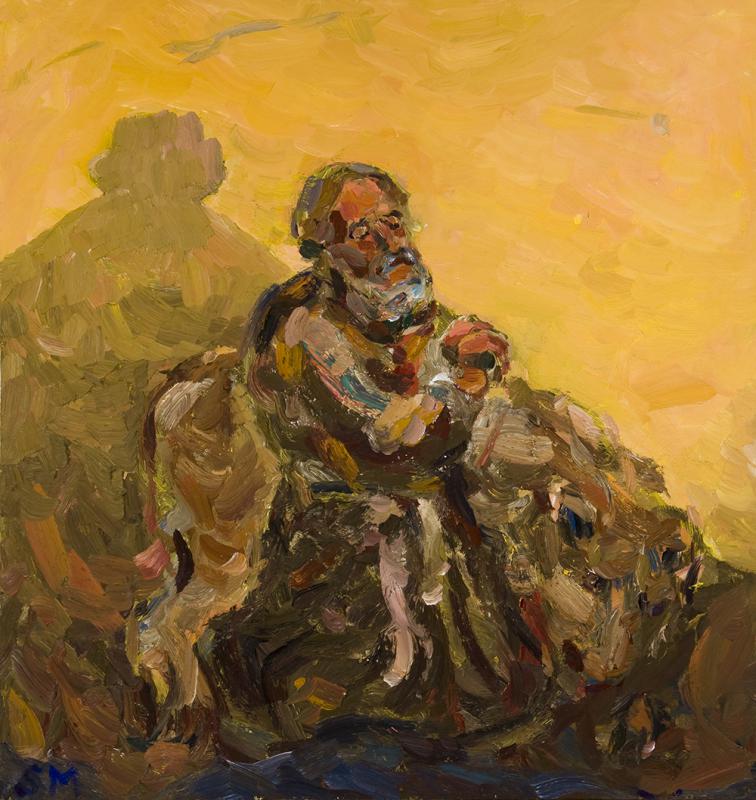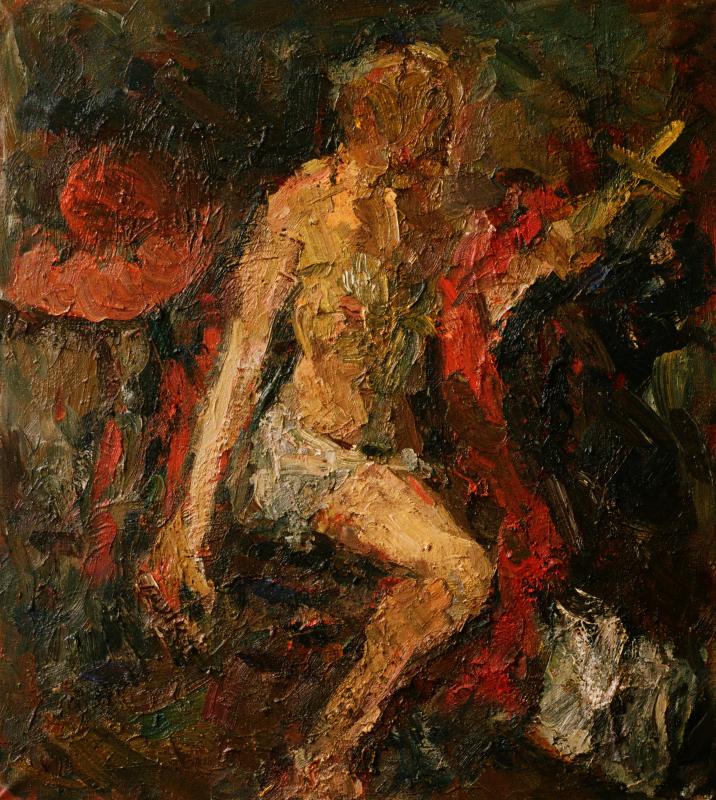On St. Jerome in 20th-21th-Century Lithuania
These days, St. Jerome is rarely mentioned in Lithuania: not a single church carries his name, he is not always recognized, sometimes mistaken for a more popular saint. The horned Moses, as well, can be seen only in old artworks. However, St. Jerome is not completely forgotten, so here we offer a few examples of the preservation of his memory, some with funny mistakes.
The Feast of St. Jerome is Celebrated...
In 1910, the St. Casimir society published the third part of The Lives of Saints by Aloyzy Fridrich SJ in the translation by Fr. Stanislovas Dyša. Pages 161-163 are dedicated to St. Jerome, containing an account of his life and teaching with a citation of Psalm 50, and an image of the repenting Saint, however the feast of St. Jerome is stated to be on September 31, a non-existent day.
LMAVB RSS LK-20/1584
The Unrecognized St. Jerome in an Interwar Periodical
One of the events dedicated to the 500th anniversary of the death of Vytautas the Great was the Agriculture and Industry Exhibition run in Kaunas in 1930. To mark this occasion, the company “New Word” (“Naujas žodis”) published a newspaper called “The Exhibition Day”. It contains an illustration put in without any contextual connection to the rest of the content, a portrait image of St. Jerome, even though he called St. Aloysius here. This mistake probably occurred through irresponsible superficiality and haste, just as it happens in today’s news media.
The Moses of Lithuanianism
Vilnius Lithuanians, among themselves, referred to Jonas Basanavičius as the Moses of Lithuanianism. The first Lithuanian “cultural newspaper for humor and satire”, “Garnys” (“The Heron”), congratulating the patriarch of the nation on the occasion of his 60th anniversary, in issue Nr. 2 for 1912 depicted him as Moses, with the tablets of Decalogue and “horns” made of rays. The image of Basanavičius as Moses who led his nation out of the desert of press absence with “Aušra” (“The dawn”) and preserved the Lithuanian identity did not fade: the above-mentioned illustration graced the cover of Eligijus Raila’s book and even gave inspiration for its title, “The Moses of Lithuanianism: The history of the life and illness of Jonas Basanavičius”.
LMAVB RSS P-147
Paintings by Sigita Maslauskaitė
Even though no new images of St. Jerome appear in our churches, some artists are inspired to visual reflection by his personality. For instance, the Director of the Church Heritage Museum, painter Sigita Maslauskaitė, more than once depicted this Saint in a vibrant expressionist style that is usual for her. Employing modern means of expression and yet unafraid to use primary sources, the artist upholds the iconographic tradition of depicting the Church Father. In one of her painting, the artist convincingly creates a pastiche of a composition with St. Jerome by the acclaimed Baroque painter George de La Tour.
St. Jerome by Audrius Puipa
The artist Audrius Puipa (1960–1997) conceived an idea of a cycle of living painting inspired by art masterpieces and realized it together with the photographer Gintautas Trimakas. In a 1996 reenactment of the famous painting by Jusepe de Ribera, St. Jerome was convincingly played by the sculptor Vytautas Šerys (1931–2006); and the Angel of the Last Judgement, by Marija Puipaitė. For more on the exhibition of A. Puipa’s work, The Staged Paintings, run in Palanga in 2018, read here.
Was St. Jerome a Lithuanian?
St. Jerome’s Lithuanian origins, of which few are aware, are discussed in the article by Irena Aleksaitė entitled “The Lithuanian ascetic St. Jerome and his horn-related problems” and published in “Šiaurės Atėnai” (“The Northern Athens”) on October 21, 2016.
St. Jerome Prize
In 2005, the Lithuanian Association of Literary Translators established the St. Jerome Prize, annually awarded to a translator for professional and artistic translations of fictional and humanities literature into Lithuanian, and for a notable lifelong contribution to the profession of translator, the theory and criticism of literary translation and to the training of translators. In 2006, the Ministry of Culture of the Republic of Lithuania and the Lithuanian Association of Literary Translators also established a prize to translators of Lithuanian literature into foreign languages awarded for professional and artistic translations of fictional and humanities literature from the Lithuanian language, for contribution to international cultural exchange and promotion of Lithuanian literature abroad. The purpose of this award is to acknowledge and promote the creative work of translators, and to call to public attention their contribution to Lithuanian culture, literature and language, cultural dialogue, publishing of elite literature from across the globe, and to raise the prestige of the profession of translator. All the winners of the prize can be found at the website of Lithuanian Association of Literary Translators.


